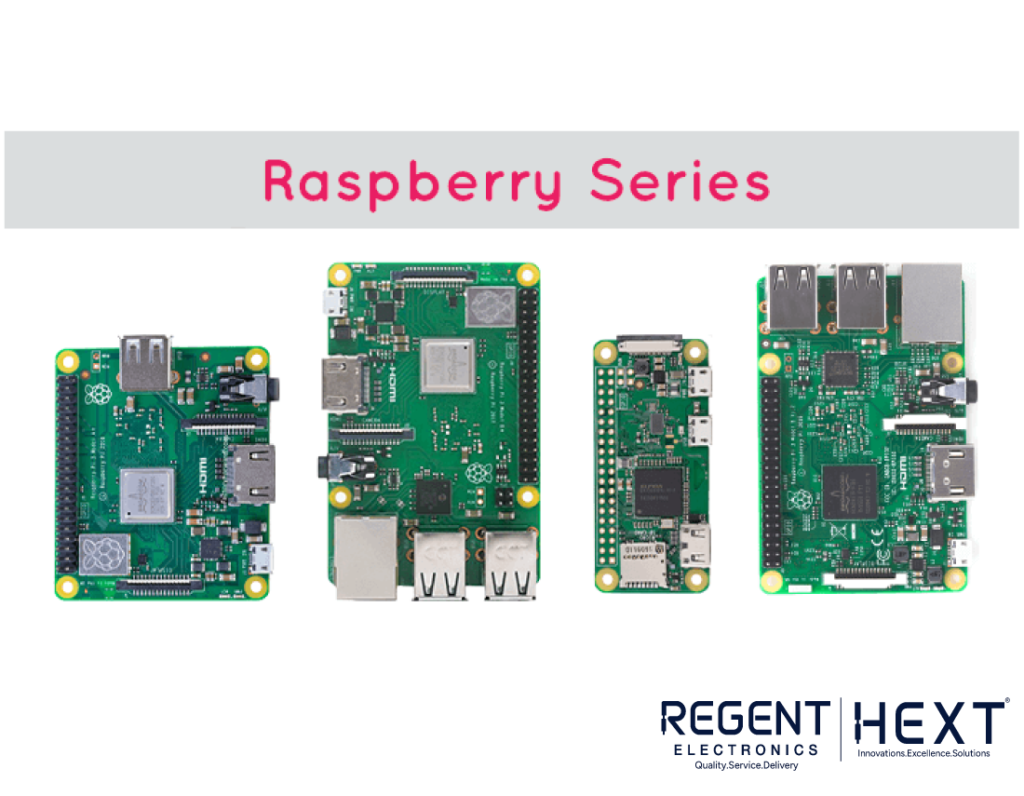
Arduino vs Raspberry Pi – Understanding the Key Differences
Introduction
When it comes to embedded systems and DIY electronics, Arduino and Raspberry Pi are two of the most popular development platforms. Each has its own unique capabilities and applications, making them suitable for different kinds of projects. In this blog, we will compare the Arduino UNO and the Raspberry Pi Zero W, highlighting their differences and helping you understand which one is the right choice for your project.
At Regent Electronics, we offer both Arduino and Raspberry Pi products, so let’s dive into the comparison and discover how each board stands out in the world of embedded systems.
Overview of Arduino and Raspberry Pi

Before diving into the specific differences, let’s start with a brief overview of both platforms:
- Arduino: Arduino is an open-source electronics platform based on simple software and hardware. It’s widely used for basic to intermediate embedded projects. However, it does not come with built-in connectivity options like Wi-Fi or Bluetooth, which must be added through external modules.
- Raspberry Pi: The Raspberry Pi is a single-board computer that offers much more processing power and flexibility compared to Arduino. It comes with built-in connectivity and can run a full-fledged operating system, making it suitable for more complex applications.
Now, let’s compare the Arduino UNO with the Raspberry Pi Zero W.
Comparison: Arduino UNO vs Raspberry Pi Zero W

| Feature | Arduino UNO | Raspberry Pi Zero W |
| Processing Unit | Microcontroller (ATmega328P) | Broadcom Single-Core Processor |
| Clock Frequency | 16 MHz | 1 GHz |
| RAM | 2 KB SRAM | 512 MB RAM |
| GPIO Pins | 14 Digital I/O + 6 Analog I/O pins | 26 GPIO Pins (no Analog support) |
| Display Support | External LCD, LED, and other displays via I/O pins | Supports display via mini HDMI and I/O pins |
| Wireless Connectivity | Requires external module | Built-in 802.11 b/g/n Wireless LAN |
| Bluetooth | Requires external module | Built-in Bluetooth 4.1 & BLE |
| USB Peripheral Support | External modules required | Built-in OTG Port for USB peripherals like keyboard, mouse |
| Storage | 32 KB Flash Memory | Supports up to 128 GB or more via external SD card |
| Size | 6.8 x 5.8 x 1 cm | 6.5 x 3 x 0.5 cm |
| Power Requirements | Can be powered via battery easily | Typically requires a stable power source |
| Software | Simple programming for sensors and components | Requires more complex tasks and software for sensor interfacing |
| Cost | Affordable (Approx INR 1599 for official Arduino UNO) | Relatively Expensive (Approx INR 1350 for Raspberry Pi Zero W) |
| Programming Language | C, C++ | Python, C, C++, Java, Ruby, etc. |
| Use as a Computer | No | Yes, can be used as a mini-computer |
| Programming Requirements | Requires PC to program | Can be programmed directly without a PC |
Key Differences Between Arduino and Raspberry Pi
- Processing Power:
The Raspberry Pi Zero W is significantly more powerful than the Arduino UNO. With a clock speed of 1 GHz compared to Arduino’s 16 MHz, the Raspberry Pi can handle more complex tasks, including running a full operating system, while Arduino is limited to simple microcontroller tasks. - Memory:
The Raspberry Pi has 512 MB of RAM, enabling it to perform better for tasks such as running applications, handling larger data sets, or even browsing the internet. In contrast, the Arduino UNO has only 2 KB of SRAM, limiting it to simpler tasks like controlling sensors and actuators. - Connectivity:
The Raspberry Pi Zero W comes with built-in wireless LAN and Bluetooth 4.1, which makes it perfect for IoT (Internet of Things) projects or remote control applications. On the other hand, the Arduino UNO does not have built-in Wi-Fi or Bluetooth, and you would need to add separate modules like the Wi-Fi Shield or Bluetooth Module to achieve similar functionality. - Storage:
Arduino UNO has limited storage (32 KB of flash memory), which is enough for simple applications. However, the Raspberry Pi Zero W uses a microSD card for storage and can support up to 128 GB or more, which is ideal for running operating systems and storing larger files. - Size:
The Arduino UNO is larger than the Raspberry Pi Zero W, which makes the Raspberry Pi better suited for projects where space is a concern. - Programming:
The Arduino UNO uses simple programming languages like C/C++, making it easy for beginners to get started. In contrast, the Raspberry Pi Zero W supports more complex programming languages such as Python, Java, and C++, making it suitable for developers with experience in software development. - Price:
The Arduino UNO is more affordable, with the official version priced at around INR 1599. However, cheaper alternatives are available for INR 500 or less. The Raspberry Pi Zero W, while slightly more expensive, offers great value given its capabilities, priced around INR 1350.
Conclusion

Choosing between Arduino UNO and Raspberry Pi Zero W depends on your project requirements. If you’re working on a simple electronics project like controlling sensors, lights, or motors, the Arduino UNO is an excellent choice due to its simplicity, affordability, and ease of use.
On the other hand, if your project requires more computational power, networking capabilities, or the ability to run complex software applications, the Raspberry Pi Zero W would be the better option.
At Regent Electronics, we offer a wide range of products to suit your needs, whether you’re working with an Arduino or Raspberry Pi platform. Choose the one that aligns with your project goals and start building amazing things today!
Which one do you think is better for your projects, Arduino or Raspberry Pi? Let us know in the comments section below!
